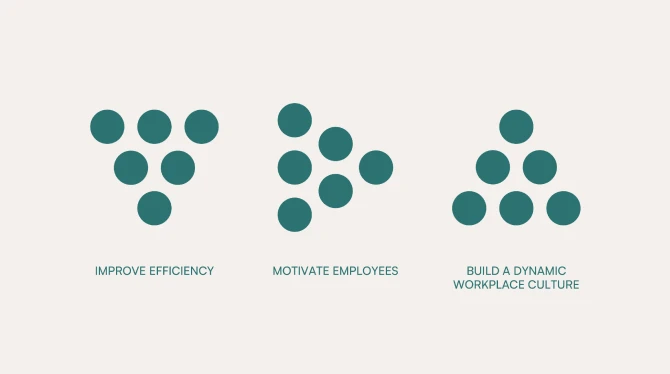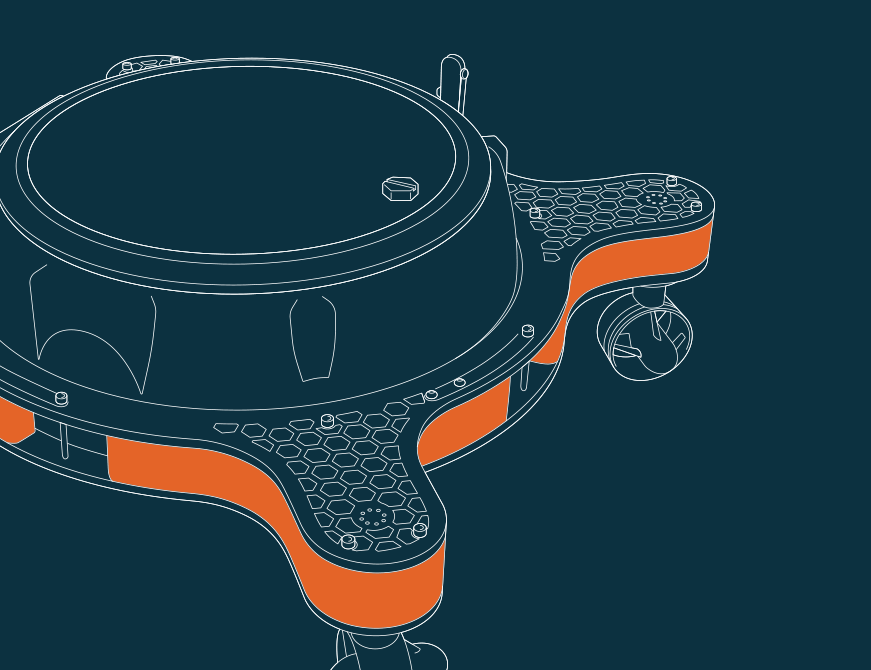🏀
Design Is A Team Sport
LAST UPDATED 16 May, 2024
Design Is A Team Sport
Why do teams achieve greater results than all-round designers?
The design space has evolved from solitary creation to a dynamic team sport. This shift highlights the power and benefits of collaborative efforts in design, where diverse skill sets and perspectives combine to achieve results far surpassing what any individual designer could accomplish. Let’s dig into it!
Successful Design Teams
To set the context, let’s kick off with teams that have been successful in the past few decades and were allowed to use design as a strategy.
Below are notable examples that stand out:
- Apple’s design team – perhaps one of the most famous examples of successful team-based design is Apple’s design team. Under the leadership of Steve Jobs and design chief Jony Ive, Apple’s design team revolutionized numerous product categories;
- IDEO’s Design Thinking – IDEO, a global design company, is renowned for its ‘Design Thinking’ approach. This methodology emphasizes empathy, ideation, and experimentation, and it thrives on diverse, cross-functional teams;
- Airbnb’s cross-functional teams – Airbnb’s rebranding in 2014 is another testament to the power of collaborative design. By integrating designers, strategists, and storytellers into a cohesive team, Airbnb was able to overhaul its brand identity and user interface, leading to a more engaging and intuitive user experience.
- Google’s Creative Lab – Google’s Creative Lab is another example where a team-based approach has led to innovative solutions. This small team of designers, writers, programmers, and filmmakers works collaboratively on projects that push the boundaries of creativity and technology.
These teams leveraged design as a strategy to harbor innovative thinking. Their goal was to transcend traditional design norms and enhance user experience, thereby distinguishing their results on a wider scale. Learn more about design as a strategy here.1
Pros of Team-based Design
- Higher quality results – multiple perspectives lead to more refined and well-thought-out designs;
- Increased production volume – teams can handle more tasks simultaneously than individuals;
- Testing complex concepts – teams can explore and test more intricate ideas;
- In-depth research – collective efforts enable more comprehensive research;
- Richer creativity – diverse opinions contribute to a more creative design process.
However, team-based design is not without its challenges. To run things properly and capitalize on all the benefits, more intricate management is necessary, often takes longer, and can be costlier compared to individual efforts.
The First Design Teams
When factories started forming, volume stopped being an issue, and the approach to designing changed. Soon enough, the need for teams of creatives started emerging and the first design studio, called The Wiener Werkstätte, was formed in 1903 in Vienna, Austria.2 As a creative collective, they focused on craft but produced everything under a trademark.
In the early 20th century, design teams were pioneers, shifting the focus from individual craftsmanship to collaborative creativity. As industries evolved, so did these teams, adapting to technological advancements and changing market demands.
Later on, the introduction of digital technology marked a pivotal shift. Traditional drawing boards gave way to computer-aided design (CAD) tools3, broadening the scope and speed of what design teams could achieve. This technological leap enabled designers to experiment with more complex and intricate concepts, pushing the boundaries of innovation.
Alongside technological changes, the structure of design teams also evolved. Hierarchical, rigid team structures became more fluid, encouraging cross-disciplinary collaboration. This shift saw designers, engineers, marketers, and even psychologists working side-by-side, establishing a holistic approach to design challenges.
Dynamics of Design Teams
Understanding the dynamics of collaborative design is crucial in comprehending how modern design teams function. Collaboration in design is not just about working together, it’s about:
- Harmonizing different perspectives, skills, and ideas to create something innovative and effective;
- Balancing between individual creativity and collective vision, and aligning individual ideas with the team’s overall goals and the project’s requirements;
- Fostering a supportive environment as a key role of creative leadership.
A leader who trusts their team, encourages experimentation and is open to new ideas that can elevate the team’s creative output. This trust and freedom empower designers to take risks and explore uncharted territories, often leading to innovative and groundbreaking designs.
Challenges of Design Teams
While pros point to multiple benefits, design teams also face various challenges:
- Balancing creativity and coordination – merging diverse ideas while staying on course;
- Time and cost implications – teams often require more time and resources;
- Complex decision-making – group decisions can be time-consuming due to extensive discussions;
- Communication barriers – clear communication is key to preventing misunderstandings;
- Blending diversified expertise – skillfully blending different skills and personalities for effective teamwork.
While these aspects pose challenges, they also present opportunities. With strong interpersonal and business skills, team collaboration can become an invaluable asset, leading to exceptional solutions that only a collective effort can achieve.
Trust The Team
Being a team leader places the responsibility for the project or account onto one person.
By assigning tasks, responsibility gets dispersed, allowing each designer to focus on a smaller portion of the solution enabling them to get into more detail, further impacting the result. Trusting the group and their skills to complete the tasks on time with the highest quality possible can spark solutions that cannot be planned.
The great thing about this is the unexpected result that might happen if the leadership style allows team members to express themselves through their work.
Another benefit of trusting the team can be seen through a well-organized workload in urgent situations, with the ability to rebalance the workload and increase focus on a more important assignment at a given moment.
Blending Diversified Expertise
Many benefits can come from having people with various skill sets working on a project. A few ways to blend expertise are:
- Simply talking to a team member can open up a new concept or solve an implementation issue;
- Switching assignments between different team members instead of insisting on rigid task management, especially on a day when inspiration is lacking;
- Having frequent group review meetings so that all team members can share their views of how the solution is coming along;
- Different perspectives will greatly impact a product’s user experience and improve its chance for success.
Ultimately, attention to detail will be on a higher level, extracting the result from a standardized solution to a more valuable and unique result.
Future of Design Teams
The future of design, interdisciplinary at its core, inherently reinforces the benefits of design as a team sport. In this landscape, the collaboration of diverse fields such as technology, psychology, environmental science, and anthropology with traditional design principles creates richer, more effective solutions. The intersection of these varied disciplines within team-based environments underscores the advantages of collective creativity and problem-solving.
Furthermore, the use of advanced technologies like artificial intelligence and virtual reality in design processes exemplifies how teams can push the boundaries of what’s possible, offering more immersive and personalized solutions. The synergy of these diverse skills within a team setting not only accelerates innovation but also fosters a holistic approach to design challenges.
Thus, the future of design, with its interdisciplinary essence, will continue to thrive on the principles of teamwork.4 It highlights how collaborative efforts are key to navigating complex challenges and crafting designs that are not just aesthetically pleasing but also socially and environmentally responsible5, catering to a better and more inclusive world.


